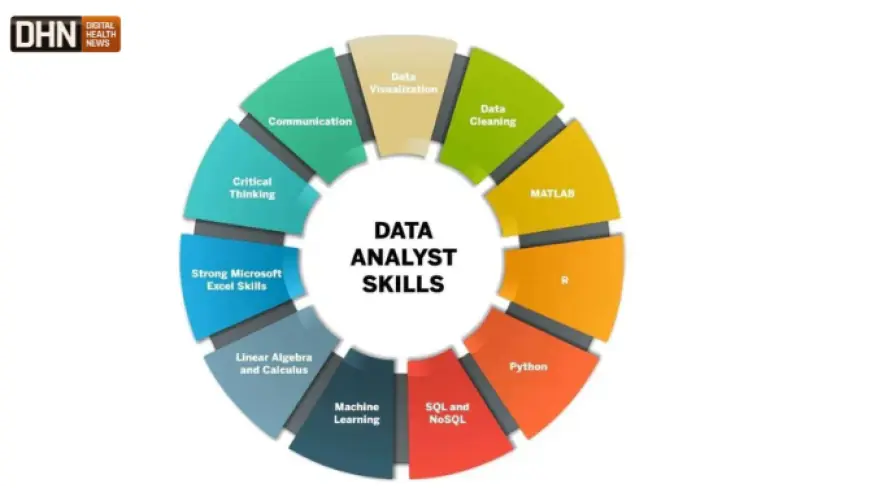The 5 Essential Skills Every Data Analyst Must Have
The 5 Essential Skills Every Data Analyst Must Have

In today’s data-driven world, the role of a Data Analyst is more critical than ever. With organizations relying on data to make strategic decisions, skilled data analysts are in high demand across industries.
But what makes a data analyst truly effective? Beyond technical proficiency, data analysts need a combination of analytical, technical, and communication skills to extract meaningful insights from raw data and turn them into actionable strategies.
In this article, we’ll explore the five essential skills every data analyst must have to thrive in this field:
-
Proficiency in Data Analysis Tools and Programming
-
Statistical and Quantitative Analysis
-
Data Visualization and Reporting
-
Critical Thinking and Problem-Solving
-
Business Acumen and Communication Skills
✅ 1. Proficiency in Data Analysis Tools and Programming
Why It Matters
Data analysts must be adept at using data analysis tools and programming languages to manipulate, clean, and analyze large datasets. Proficiency in these tools allows them to automate repetitive tasks, perform advanced queries, and derive insights efficiently.
Key Tools and Languages
-
SQL (Structured Query Language): SQL is essential for querying and managing large datasets. Every data analyst should be able to write efficient queries to extract and manipulate data.
-
Python and R: These programming languages are widely used for data manipulation, statistical analysis, and machine learning. Python, in particular, is valued for its versatility and extensive libraries, such as:
-
PandasandNumPyfor data manipulation. -
MatplotlibandSeabornfor data visualization.
-
-
Excel and Spreadsheets: Despite the growth of advanced tools, Excel remains vital for basic data analysis, visualization, and quick calculations.
-
BI Tools (Power BI, Tableau): Proficiency in data visualization platforms is crucial for creating interactive dashboards and reports.
Real-World Application
Imagine working as a data analyst for an e-commerce company. You might use:
-
SQL to pull customer purchase data.
-
Python to perform statistical analysis and predict customer churn.
-
Tableau to create an interactive dashboard visualizing customer retention trends.
? 2. Statistical and Quantitative Analysis
Why It Matters
Statistical analysis lies at the heart of data analytics, enabling analysts to interpret data accurately and derive meaningful conclusions. A solid grasp of probability, statistical tests, and hypothesis testing is essential for making data-driven decisions.
Key Concepts
-
Descriptive Statistics: Mean, median, standard deviation, and variance to summarize data.
-
Inferential Statistics: T-tests, chi-square tests, and regression analysis to identify relationships and make predictions.
-
Probability Theory: Understanding probability distributions (normal, binomial) is critical for making probabilistic inferences.
-
Hypothesis Testing: Data analysts must be able to design and interpret A/B tests to validate business strategies.
Real-World Application
For example, a data analyst at a marketing agency might:
-
Use regression analysis to determine how ad spend affects conversion rates.
-
Apply hypothesis testing to assess whether a new ad campaign significantly outperforms the previous one.
? 3. Data Visualization and Reporting
Why It Matters
Data is only valuable if decision-makers can interpret and act on it. This is where data visualization plays a key role. An effective data analyst must transform complex data into clear, visually appealing charts, graphs, and dashboards.
Key Skills
-
Data Cleaning and Preparation: Before visualizing data, analysts must ensure data quality by removing duplicates, filling missing values, and formatting datasets.
-
Visualization Techniques: Mastery of bar charts, line graphs, scatter plots, and heatmaps is essential.
-
Dashboard Design: Creating interactive dashboards in tools like Power BI, Tableau, or Looker helps stakeholders explore data independently.
-
Storytelling with Data: Beyond visualizing data, analysts should weave a narrative that explains the insights and their implications.
Real-World Application
A retail data analyst might:
-
Use Power BI to create a sales performance dashboard.
-
Highlight trends in customer purchasing behavior with line charts.
-
Include filters for region, product category, and time range to make the dashboard interactive.
? 4. Critical Thinking and Problem-Solving
Why It Matters
Beyond technical expertise, successful data analysts possess strong critical thinking skills. They don’t just accept data at face value—they ask the right questions, identify patterns, and find creative solutions to complex problems.
Key Skills
-
Data Interpretation: Analyzing data accurately, recognizing outliers, and identifying inconsistencies.
-
Root Cause Analysis: Investigating the underlying causes of business issues using data.
-
Pattern Recognition: Identifying trends and correlations to make informed predictions.
-
Hypothesis Formulation: Using data to validate or reject assumptions.
Real-World Application
A data analyst in healthcare might:
-
Identify a spike in hospital readmission rates.
-
Use root cause analysis to determine whether specific procedures or patient demographics are contributing factors.
-
Present data-driven recommendations to reduce readmissions.
? 5. Business Acumen and Communication Skills
Why It Matters
While technical skills are crucial, business acumen and communication skills enable analysts to connect data insights to business goals. Data analysts must effectively communicate findings to both technical and non-technical stakeholders.
Key Skills
-
Industry Knowledge: Analysts must understand the industry’s KPIs, trends, and pain points to provide relevant insights.
-
Presentation Skills: Data analysts should be comfortable presenting findings through compelling visuals and clear narratives.
-
Data Storytelling: The ability to explain complex data insights in a clear, actionable way is invaluable.
-
Cross-Department Collaboration: Data analysts frequently collaborate with marketing, finance, and operations teams, requiring strong interpersonal skills.
Real-World Application
A data analyst at a SaaS company might:
-
Identify churn risk factors using data models.
-
Communicate the insights to the customer success team using visual reports.
-
Recommend retention strategies backed by data.
How to Develop These Skills
1. Take Online Courses and Certifications
-
SQL and Python Courses: Platforms like Coursera, Udemy, and DataCamp offer in-depth courses.
-
Statistical Analysis: Learn hypothesis testing, regression, and inferential statistics through online programs.
-
Data Visualization: Courses in Tableau, Power BI, and Looker can enhance visualization skills.
2. Practice with Real Datasets
-
Use platforms like Kaggle or Google Dataset Search to access free datasets.
-
Build projects that involve data cleaning, analysis, and visualization.
3. Stay Current with Industry Trends
-
Follow data science blogs and publications.
-
Explore open-source tools and libraries to stay up to date.
Conclusion
To succeed in the competitive world of data analytics, mastering these five essential skills is critical:
-
Proficiency in data analysis tools and programming.
-
Expertise in statistical and quantitative analysis.
-
Strong data visualization and reporting capabilities.
-
Critical thinking and problem-solving prowess.
-
Business acumen and effective communication skills.
By honing these skills, data analysts can deliver valuable insights, drive data-driven decision-making, and create a meaningful impact on their organizations.
What's Your Reaction?
 Like
0
Like
0
 Dislike
0
Dislike
0
 Love
0
Love
0
 Funny
0
Funny
0
 Angry
0
Angry
0
 Sad
0
Sad
0
 Wow
0
Wow
0
























































